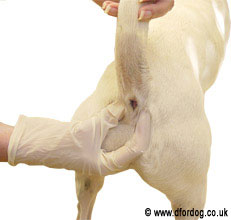
Puppy Vaccination Schedule

Your veterinarian will determine a proper puppy vaccination schedule for your pet, but you still need to be aware of some important milestones.
Why?
Because missing even one vaccination may expose your puppy to a variety of diseases.
Your puppy will receive his or hers first series of vaccines between 6 and 8 weeks of age. More will follow.
I will show you what vaccines, and at what age, your puppy will receive, but first, let's review some important...
Facts About Dog Vaccination
 |
- Some people think that smaller breeds receive smaller dosage vaccines than puppies of larger breeds. That's not true. All puppies receive the same dosage.
- After a vaccine is administered, it does not immediately stimulate your puppy's immune system. First, puppy's immune system must recognize and respond to the antigens it received.
- Usually, protection against the decease will begin about 5 days after the vaccination. Full protection can take additional 5 to 9 days.
- Sometimes, your puppy will need to be vaccinated two or more times over several weeks to achieve full protection.
- Finally, one of the biggest misconceptions about dog vaccination is that booster shots are required on an annual basis. That's not so. Here is a short video that shows why some annual booster shots are not only unnecessary but may also be dangerous...
Side Effects of Puppy Shots
Just like babies, puppies can experience a number of adverse reactions to vaccination.
Here are some of the symptoms and what you should do if your puppy displays any of them…
Depression
May occurs in the first 24 hours after vaccination. If it lasts longer than 24 hours, call your veterinarian
Vomiting
Just like depression, may occur in the first 24 hours after vaccination. Contact your veterinarian if it lasts beyond 24 hours
Diarrhea
Same as vomiting
Swelling
This is probably an allergic reaction. Call your veterinarian immediately
Shaking
Same as vomiting
The dog health guide includes additional symptom charts. Each chart starts from the specific symptoms of a particular ailment and tells you the recommended path of treatment for each one, as well as advising whether veterinary care should be sought – and if so, how urgently.
-
Puppy Vaccination Schedule
Your veterinarian will determine a schedule for your puppy. What follows is just a sample puppy vaccination schedule.
AgeVaccination6 weeks
Distemper, Deworming, Fecal flotation, Heartworm preventive
9 weeks
Distemper, Parvo, Corona, Bordetella
12 weeks
Distemper, Parvo, Corona
16 weeks
Distemper, Parvo, Corona, Rabies, Fecal Flotation, Lyme
Annually
Distemper, Parvo, Corona, Rabies, Fecal Flotation, Heartworm test
Discuss your puppy's vaccination schedule with your vet during the first visit.















